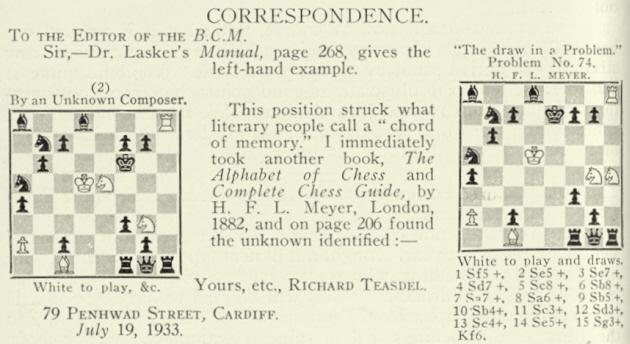
Edward Winter
A letter from Richard Teasdel of Cardiff on page 342 of the August 1933 BCM:

(7421)
Jean-Pierre Rhéaume (Montreal, Canada) asks for information about a ‘highly humorous’ composition ‘by an unknown composer’ which was discussed by Emanuel Lasker on pages 268-269 of Lasker’s Manual of Chess (London, 1932):
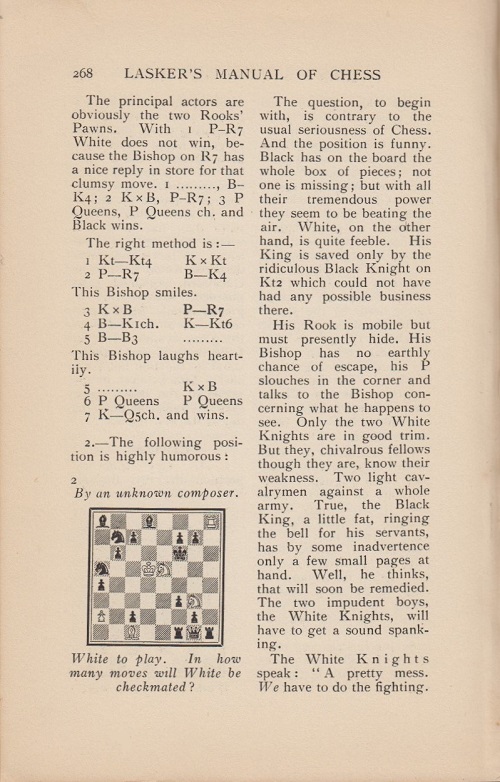
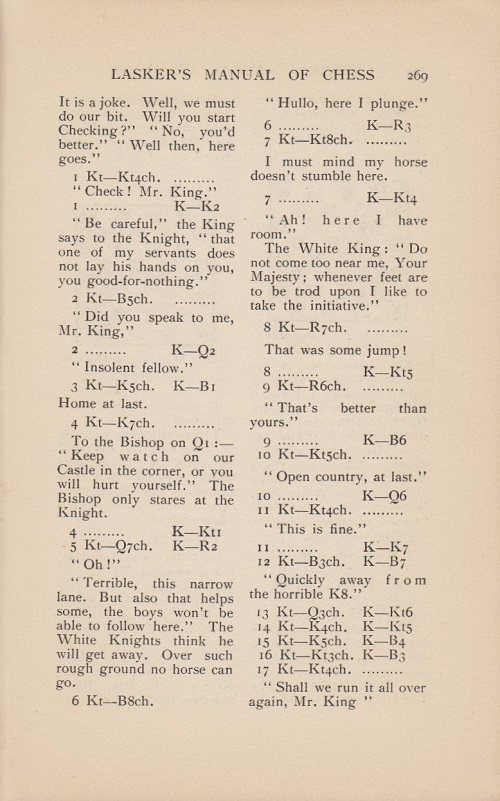
That edition of the Manual is the best known, having been reissued by David McKay Company, Philadelphia in 1947 and by Dover Publications, Inc., New York in 1960.
The text on pages 299-301 of the first English-language edition (New York, 1927) differed in some respects:
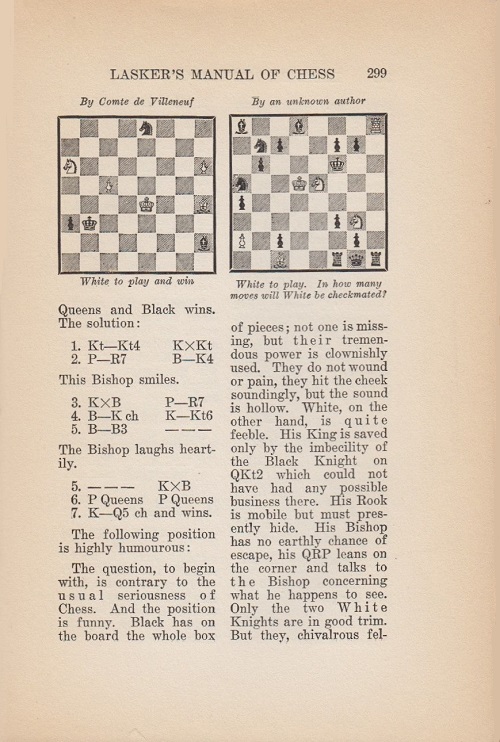
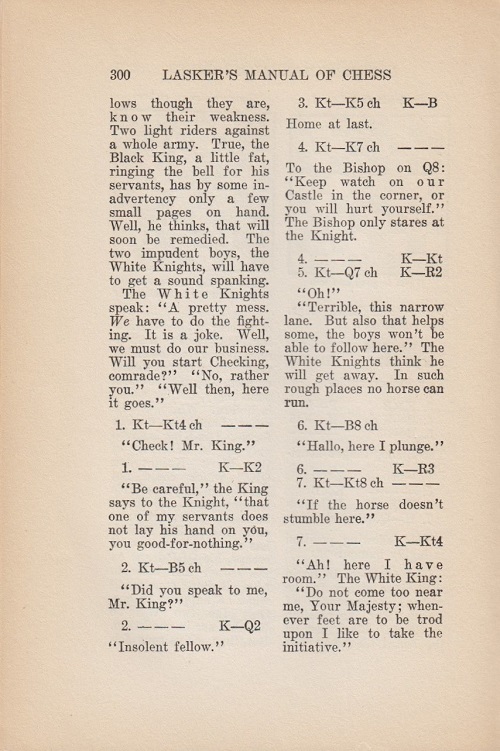
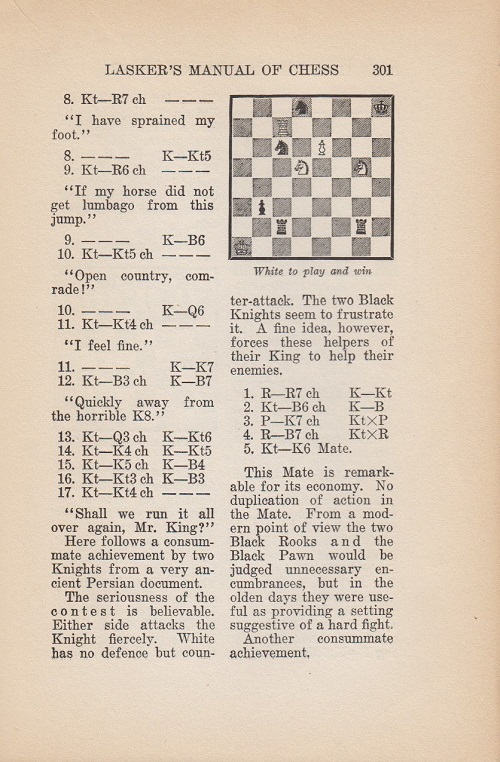
The textual differences include one pointed out by our correspondent: the sentence ‘They do not wound or pain, they hit the cheek soundingly, but the sound is hollow’ was dropped by Lasker.
Below is the text as published in one of the many early editions of the Lehrbuch des Schachspiels (Berlin, 1926):

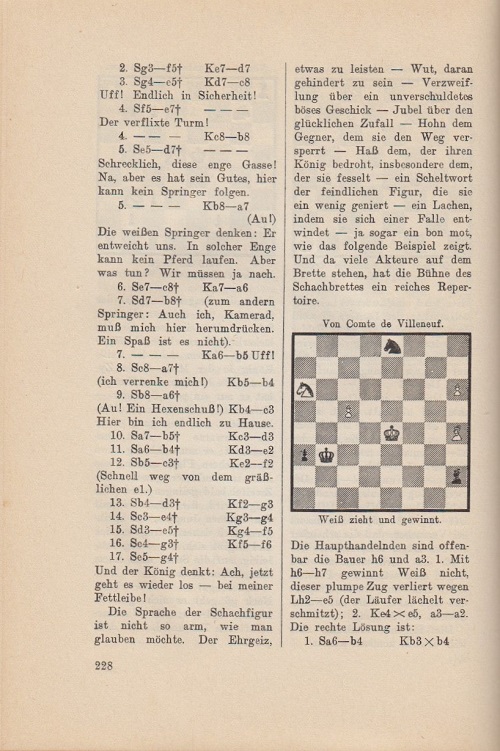
As regards the reference to ‘an unknown composer’, we noted in C.N. 7421 a letter from Richard Teasdel of Cardiff on page 342 of the August 1933 BCM:
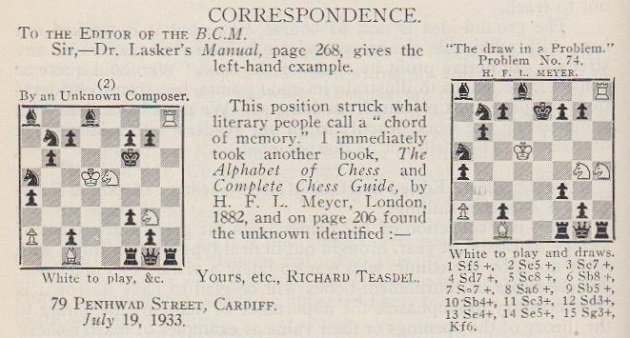
Subsequently, Russian editions of Lasker’s book (e.g. Moscow, 1937; Moscow, 2002; Moscow, 2011; Moscow, 2014) ascribed the position to Meyer, whereas the first edition (Moscow and Leningrad, 1926) had not done so. Below, for example, are two pages from the 1937 edition:
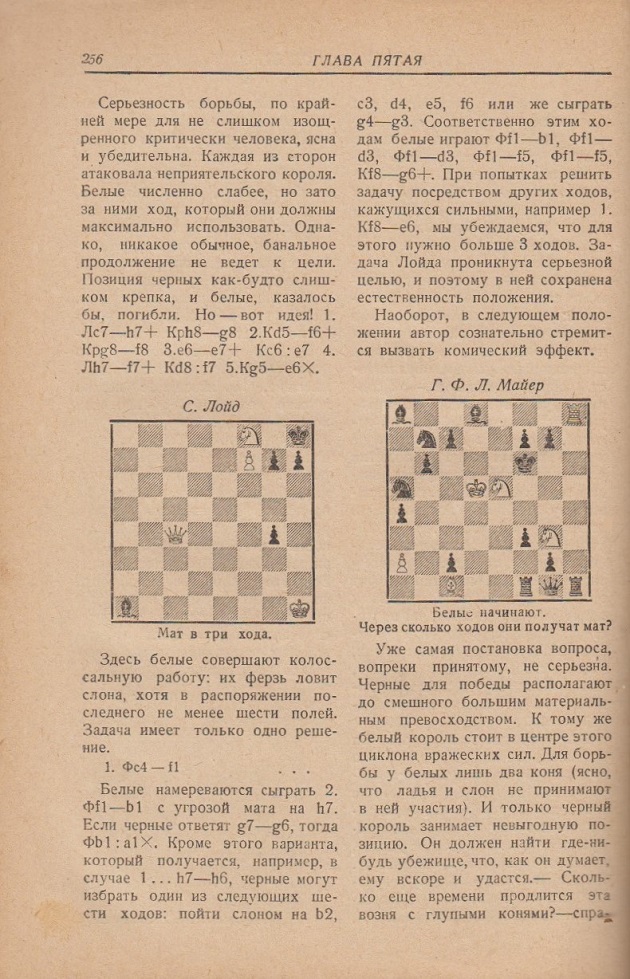
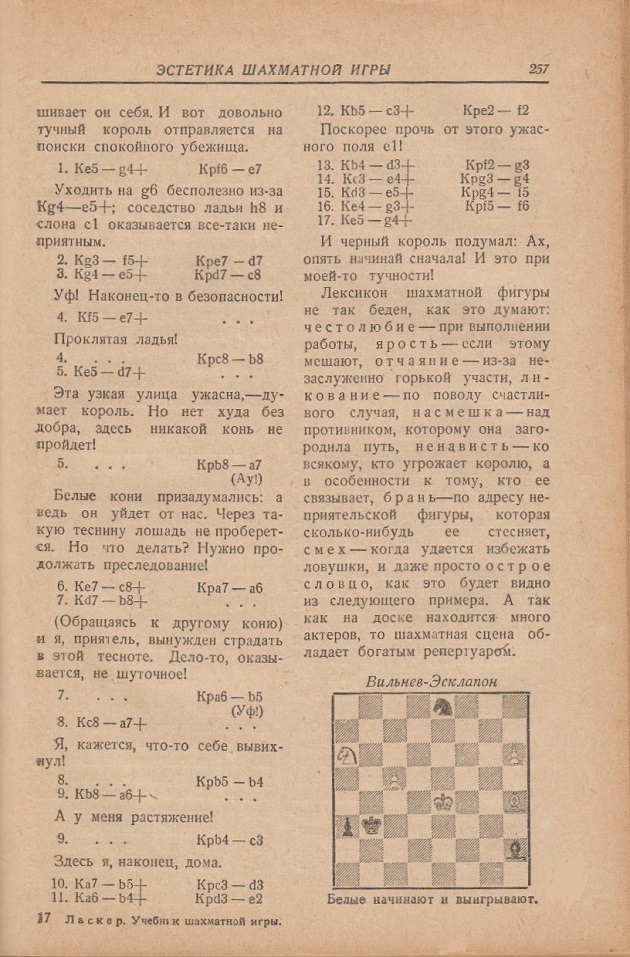
Meyer’s name has not been found in editions of Lasker’s Manual in other languages (English, Dutch, German, Greek and Spanish).
Below is page 206 of A Complete Guide to the Game of Chess by H.F.L. Meyer (London, 1882), as referred to by Richard Teasdel in his letter to the BCM:
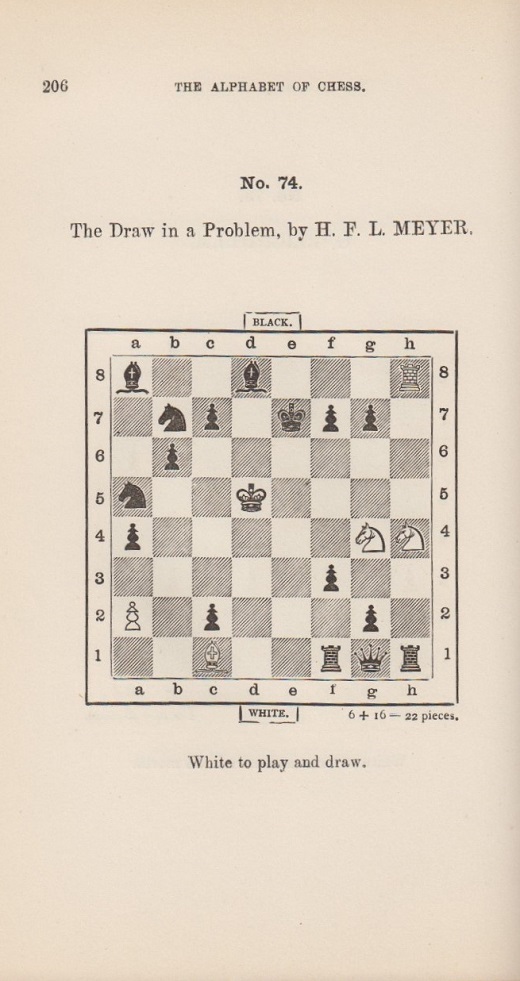
The solution on pages 251-252:


In addition to the positions already shown (White knights on g3/e5 and g4/h4) a third version (a3/a6) can be given, from Harold van der Heijden’s Endgame study database III:
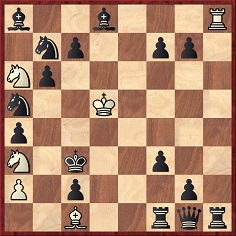
The solution given in the database: 1 Nb5+ Kd3 2 Nb4+ Ke2 3 Nc3+ Kf2 4 Nd3+ Kg3 5 Ne2+ Kg4 6 Ne5+ Kf5 7 Ng3+ Kf6 8 Ng4+ Ke7 9 Nf5+ Kd7 10 Ne5+ Kc8 11 Ne7+ Kb8 12 Nd7+ Ka7 13 Nc8+ Ka6 14 Nb8+ Kb5 15 Na7+ Kb4 16 Na6+ Kc3 17 Nb5+ Drawn.
Further information is sought concerning the source specified in the database, ‘American Chess Nuts, 1880’, bearing in mind that the book with that title by E.B. Cook, W.R. Henry and C.A. Gilberg was published in New York in 1868.
The composition, ascribed to Meyer but with white knights on g3 and e5, was included on page 171 of Secrets of Spectacular Chess by J. Levitt and D. Friedgood (London, 1995) the condition in the caption being specified as ‘Win’. That was corrected to ‘Draw’ on page 205 of the second edition (London, 2008).
The exact origins of the three versions of the composition have yet to be sorted out, and another complication arises from a remark in the obituary of Meyer on page 101 of the February 1928 BCM:
‘He was a remarkably clever composer, delighting in improving the immature works of others, and here he made the mistake of failing to give credit to the originators which did not redound to his popularity.’
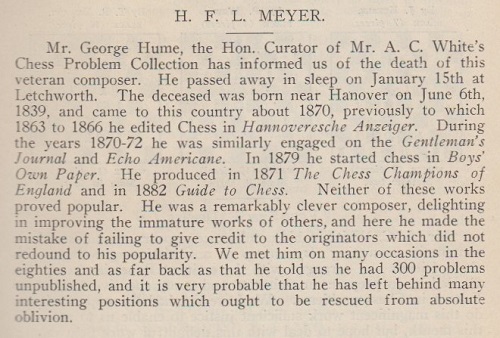
The BCM obituary failed to give credit to the source of some of its information, i.e. page 90 of The Chess Bouquet by F.R. Gittins (London, 1897):
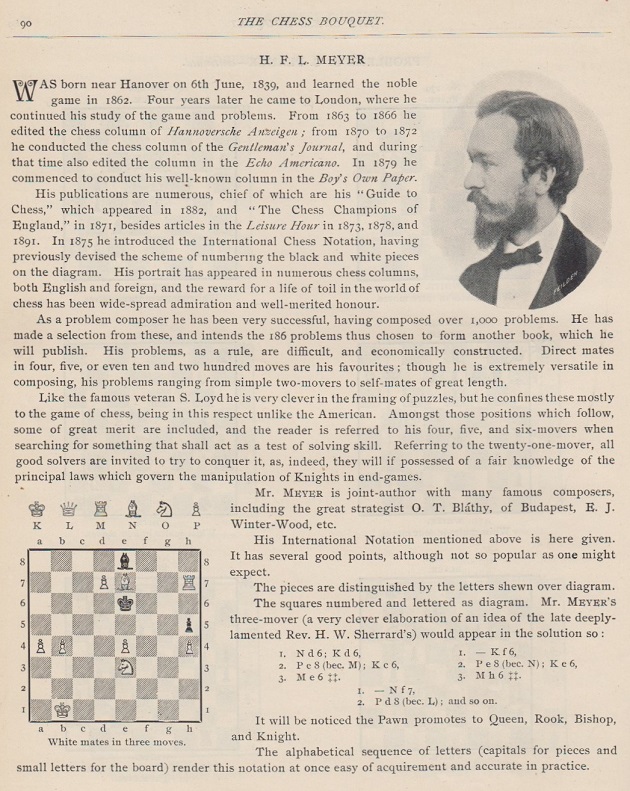
A final puzzle for now: both the BCM and The Chess Bouquet referred to an 1871 publication by H.F.L. Meyer, The Chess Champions of England. What is known about it?
(9634)
As pointed out by Jean-Pierre Rhéaume, the Meyer composition was also published on page 76 of the Dictionnaire des échecs by F. Le Lionnais and E. Maget (Paris, 1967 and 1974), with a fourth initial position for the white knights: g3 and g4. Only a date, 1880, was offered:
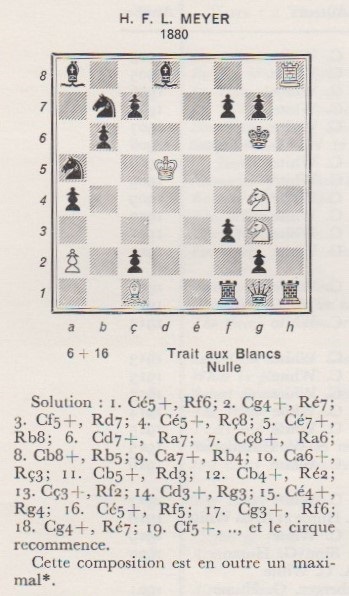
We note that the same information was given on page 1349 of Le guide des échecs by N. Giffard and A. Biénabe (Paris, 1993) and on page 1563 of the co-authors’ Le nouveau guide des échecs (Paris, 2009). On both occasions the term ‘problémiste américain’ was used to describe Meyer.
In the Dictionnaire des échecs Meyer’s composition was included in the entry on the problem theme Le Cirque. It appeared with that heading on page 87 of the December 1910 Chess Amateur, in the ‘Gems, Old & New’ column by Thomas S. Johnston:
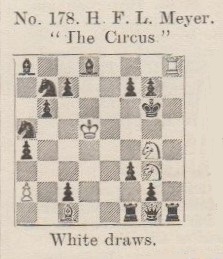
Regarding the so-called publication The Chess Champions of England (C.N. 9634), Michael Clapham recalls Meyer’s ‘Champions of British Chess’ photographic chess board, discussed in C.N. 3467.
(9638)
Alain Pallier (Lauris, France) refers us to the collection of Marcel Lamare (1856-1937), the subject of an article by our correspondent on pages 870-871 of issue 121 (July 1996) of EG. He has also forwarded a copy of the sheet on which Lamare recorded the composition by H.F.L. Meyer:
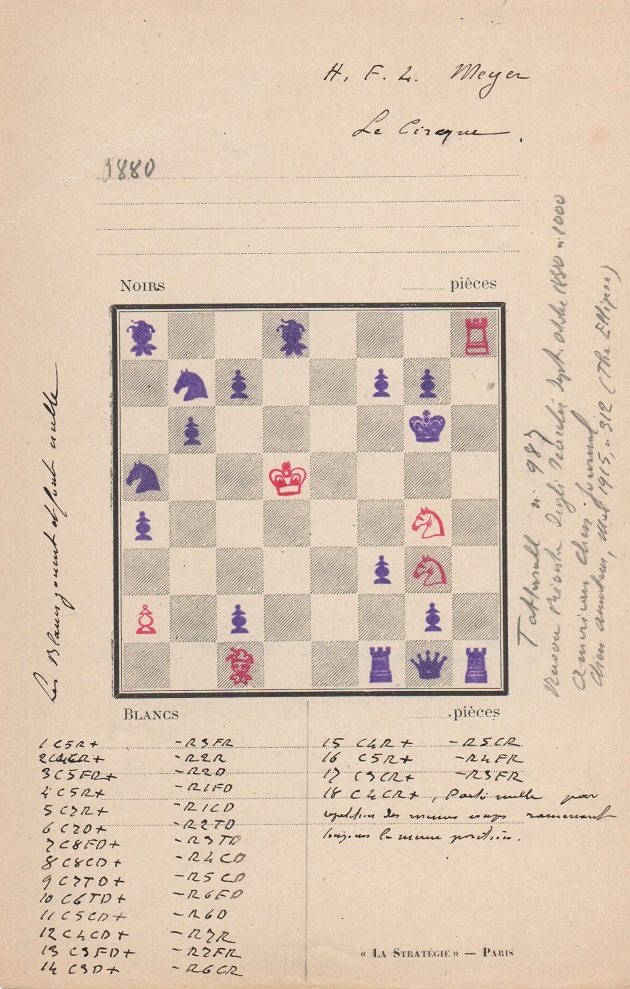
We are grateful to the Cleveland Public Library for the two 1880 items listed by Lamare:

American Chess Journal, July 1880, page 86
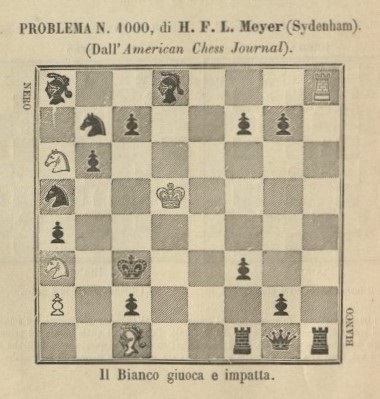
Nuova Rivista degli Scacchi, September-October 1880, page 256
Below is the last publication mentioned by Lamare, from page 238 of the May 1915 Chess Amateur (in T.R. Dawson’s ‘Endings’ column):

From page 280 of the June 1915 Chess Amateur:

(9660)
C.N. 4573 quoted the following advice:
‘Generally keep the L so that it may not be pinned by an M or an N, or be attacked when an O checks.’
It appeared on page 55 of A Complete Guide to the Game of Chess by H.F.L. Meyer (London, 1882), which we described in C.N. 2755 (see pages 59-60 of A Chess Omnibus) as ‘one of the few nineteenth-century chess books in English to use the algebraic notation’.
With leaden ingenuity Meyer explained (on pages 12-15 of his book) that the letters A to H were used for the files on the board and the letters K to P for the units:
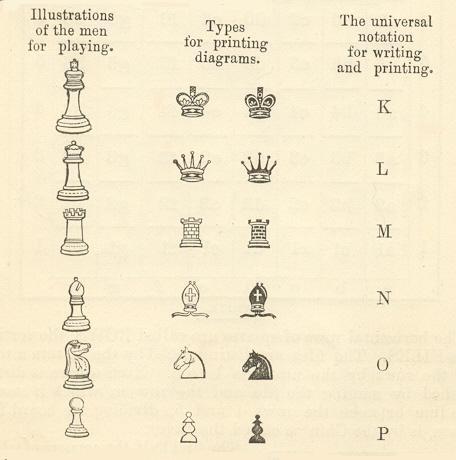
As names Meyer then offered King, Lady Queen, Monument, Neighbor, Over-leaper and Pawn or, as an unnamed American writer had proposed, Keeper, Lord, Master or Minister (also Mammoth), Nobleman, Overseer and Peasant. Meyer optimistically termed the system ‘the universal notation’.
(4589)
Michael McDowell (Westcliff-on-sea, England) refers to C.N.s 2755, 2766 and 2772 (see pages 59-60 of A Chess Omnibus), which discussed a composition by H.F.L. Meyer:
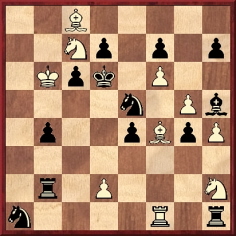
Mate in eight
It may be recalled that on pages 274-275 of his book A Complete Guide to the Game of Chess (London, 1882) Meyer offered prizes to readers able to solve the problem. The intended solution was 1 g6 hxg6 2 d4 exd3 3 Ba6 Rc2 4 Rf3 gxf3 5 Ng4 Bxg4 6 Bc4 Rxc4
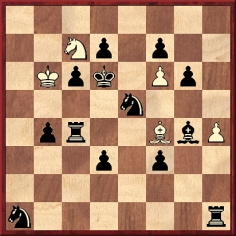
7 Bh6, followed by 8 Bf8 mate. However, a computer-check indicated that after 1 g6 Black can prevent the mate with 1...Ra2, followed (in most variations) by 2...Ra5, and Martin Hoffmann (Zurich) therefore proposed the addition of a white pawn at b3 and a black pawn at a6 in the initial position.
Now Mr McDowell quotes from page 131 of The Problemist, May 1931, which reported on a lecture entitled ‘Wager Problems’ given by John Keeble on 30 January 1931. Keeble presented Meyer’s problem and stated:
‘The composer offered a prize of £3 for the first complete solution of this. The late J.A. Miles sent the first correct paper, but H.F.L.M. declined to pay up because the solution was not written out in his “International” K.L.M.N.O.P. notation. Moreover he refused to pay any other solver because he was not the first! A piece of smart practice fortunately without any parallel in British chess problem history.’
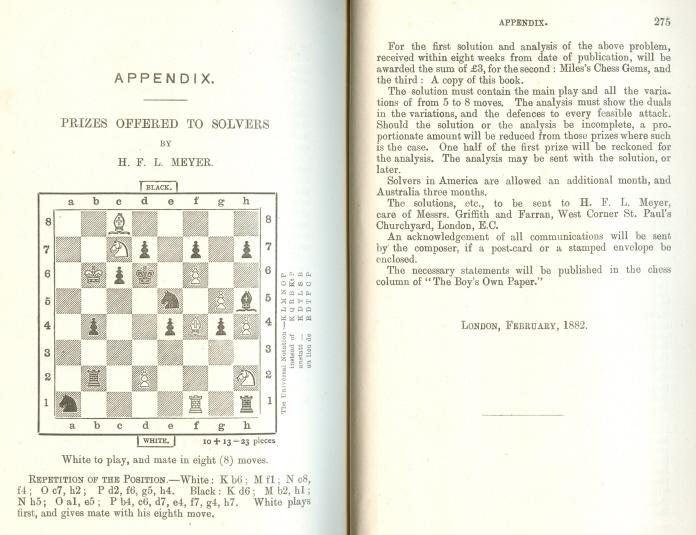
Pages 274-275 of A Complete Guide to the Game of Chess by H.F.L. Meyer
(5022)
To the Archives
for other feature articles.
Copyright Edward Winter. All rights reserved.